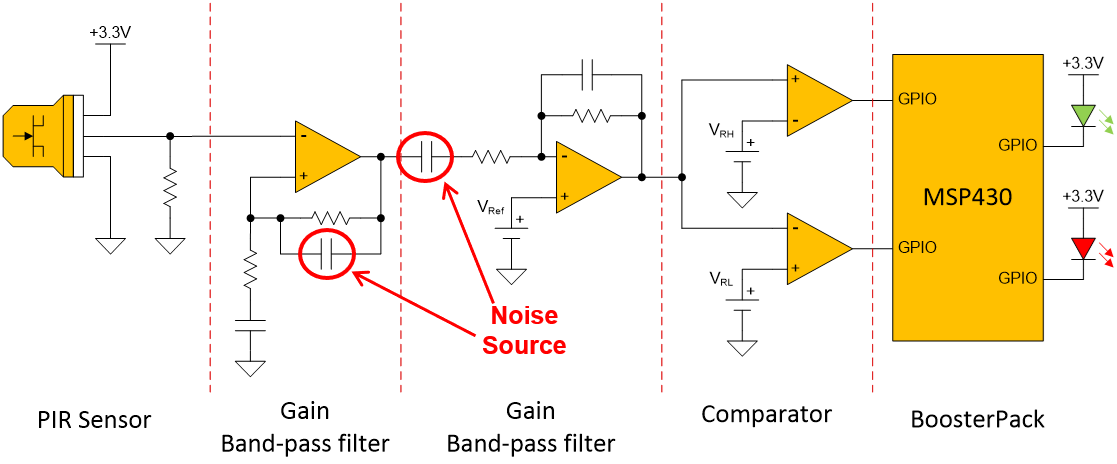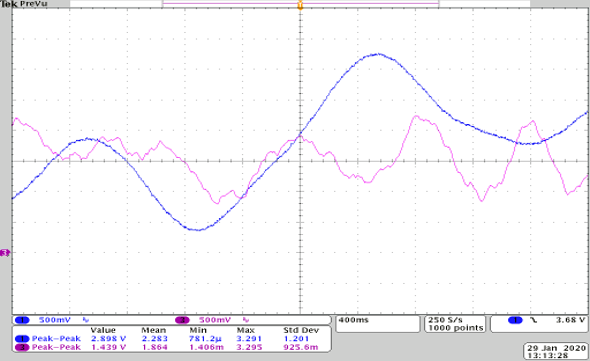SLAAE30 July 2021 MSP430FR2355
1.2.1 Traditional Motion Detection Signal Chain Design
Figure 1-4 illustrates the traditional PIR motion detector signal chain. The signal from the PIR sensor is fed through a series of gain band-pass filters, that usually include DC blocking caps, and then fed to a set of comparators for low and high side waveform detection, acting as a window comparator.
 Figure 1-4 Traditional PIR Signal Chain
Figure 1-4 Traditional PIR Signal ChainAs mentioned in the introduction, this signal chain is fixed and limited. For the band-pass filters, the gain and cutoff frequencies are configured specifically for a particular detection range and motion speed. Typical cutoff frequencies are around .7 – 30Hz and overall signal gain may be as high as 1000x.
Another downside of this signal chain we found during our investigation, is that these DC filter caps actually end up being very large noise sources for the signal chain. Ceramic surface mount capacitors are usually made of barium titanate, which has a piezoelectric effect, meaning any noise or vibration actually generates small noise signals on the caps. Tantalum capacitors at such low frequencies can also introduce noise onto the signal. Coupling this noise with up to 1000x gain in the signal chain can return a very poor signal to noise ratio. In Figure 1-5, the signal from a PIR sensor was fed into the above signal chain and a capacitor free signal chain using the MSP430FR23355 in parallel. It is much easier to see the motion signal with the capacitor free circuit.
 Figure 1-5 Traditional vs Capacitor-Free Signal Chain
Figure 1-5 Traditional vs Capacitor-Free Signal Chain